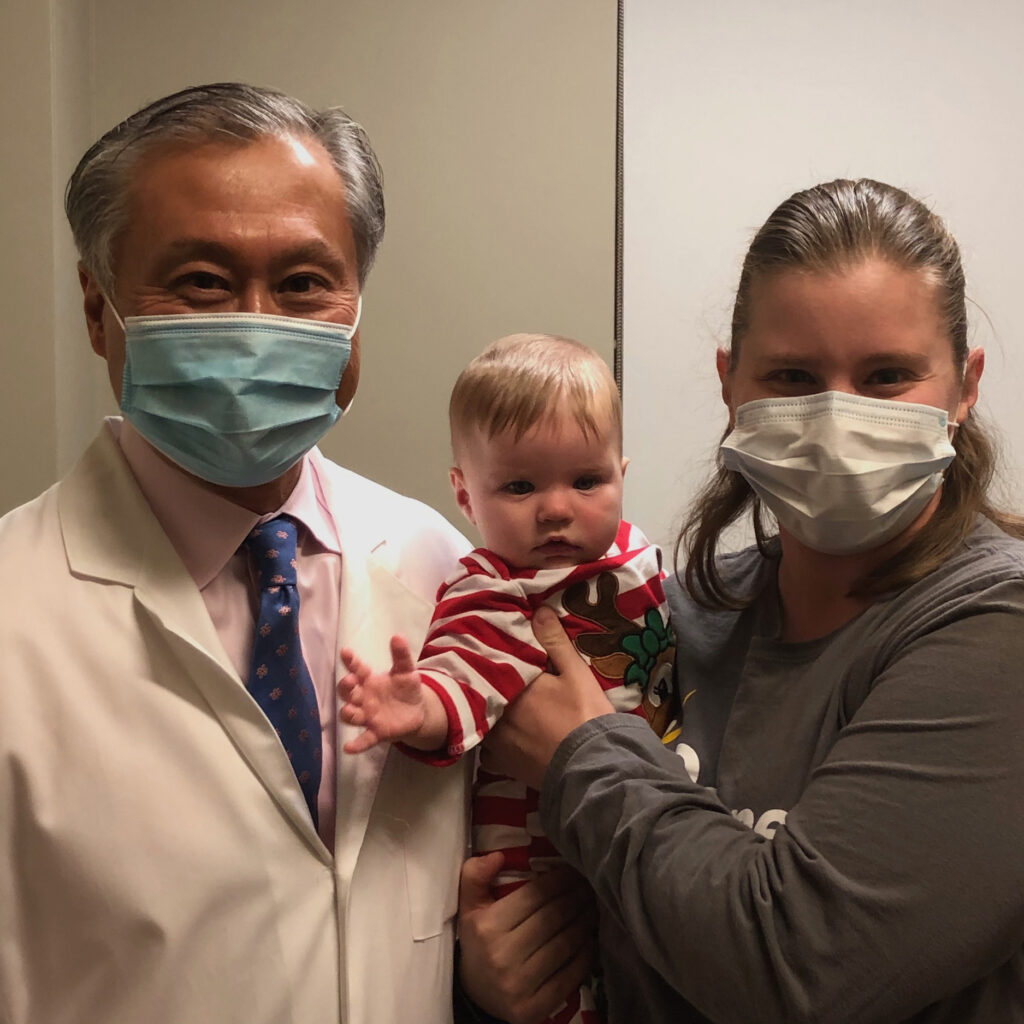Patient Stories
Secondary Infertility Follows Famous Last Words of “This Is Going to Be Easy”
That’s what Ashley and Scott thought before tumbling down the hole into the unfamiliar and scary world of secondary infertility, fertility medications and genetic disorders
Story written by Ashley O’Flynn
After Scott and I had been married for about four months and I was nearing the end of my Bachelor of Science in Nursing (BSN) program, we decided to stop preventing a pregnancy. Scott was a little nervous I think because let’s face it, we both assumed this was going to happen quickly and we would be welcoming a new bundle of joy in no time.

Months pass – no positive pregnancy test.
Over a year later in 2017 when I moved to a new nursing unit at work and we were still not pregnant, I decided it was time to maybe go to the OB to see what he had to say. He didn’t run labs. He didn’t ask many questions. He just put me on clomiphene (brand name Clomid).
I was alone with my older daughter, Natalie, at this appointment as it was a last-minute decision and I was scared. Scared that I was being put on this medication that I knew nothing about. Scared that I was even having to take “fertility medication.” I remember calling my husband with a shaking voice as I told him what the plan was from that appointment.
So, we did the cycle of Clomid: Day 21 progesterone level testing came and the level was low. We increased the dose and again day 21 level was low. I remember increasing the dose until we got to 150 mg and then I refused to increase to anything higher as I was worried the dose was too high and we didn’t even know if it was doing anything.
4 tips for saving money on fertility medications
Also being a nurse, I did lots of my own research and noticed that the progesterone on a typical 28-day cycle would be highest on day 21. But for me, whose cycle was not at all 28 days – it wasn’t abnormal for me to have cycles that were 45+ days – my progesterone was probably not peaking on that “magic day” because I wasn’t the typical “normal” cycle length.
A last round of Clomid before the gut punch: “it’s time you go see a fertility specialist”
I remember voicing my concerns to the OB I was seeing, with the nurse and doctor brushing me off and telling me I didn’t know what I was talking about. It was then that I said, “Enough is enough,” and made an appointment to see another OB in the practice.
I sat down with her and voiced my concerns that I didn’t feel heard and that my concerns were brushed off without even any attempt by the doctor to explain his reasoning. She listened to me and heard me out. It was refreshing.
We decided to do one last round of Clomid at the dose I was comfortable with and see what happened. When – as I’m sure you expect – that round didn’t work either, we made another appointment to see my new OB. It was at that time she looked at me and my husband and said the words I expected to hear but that also felt like a blow to my gut … “I think it’s time you go see a fertility specialist.”
She wrote down the name of the doctor she recommended, Dr. Peter Lu, and I teared up out of nowhere. I felt so defeated and lost.
Battling secondary infertility, IVF cost concerns & insurers
What had happened so easily and quickly the first time was now feeling like it had just been tucked on a shelf I could never seem to reach. This is how secondary infertility, which is infertility after a previous successful birth, affected me. I am the financial one in our marriage and all I could think when I heard “fertility specialist” was IVF (in vitro fertilization), needles and money.
Money we didn’t have as we continued to pay down debt from school and debt from necessary purchases for our home. My anxiety, which usually is pretty manageable, went through the roof as I wondered what this was all going to cost. Little did I know that God had a plan …
Once I gathered my emotions and decided we would figure out the finances aspect of this secondary infertility as it happened, I made an appointment. After I made the appointment for February 2, 2018, and the doctor’s office informed me, they were not “tier 1” (the best coverage for my insurance) and that I would have a deductible to meet and then a lifetime max of coverage, I decided to look at my benefits closer.
